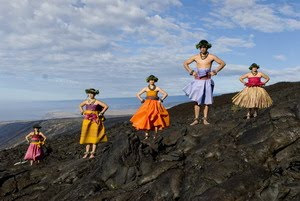Danced by Halau O Kekui, the work is a sequel to the groundbreaking Holo Mai Pele, first presented at the MACC in 1995. The evening will combine hula, chant, drama, and storytelling to recount the tales of Pana'ewa the lizard god from Hawai'i island, Kapo'ulakina'u from the island of Maui, and the forest goddesses Ko'iahi, Mailelauli'i and Kaiona of the Waianae mountain range.
For anyone interested in Hawai'ian storytelling and/or hula, this promises to be a great night. Last time we checked, tickets were still available at all price levels (including the $12 seats in the balcony); you can check for tickets and read more about the show at the MACC's website.
* * *
For more Maui events and history, follow us on Twitter.

